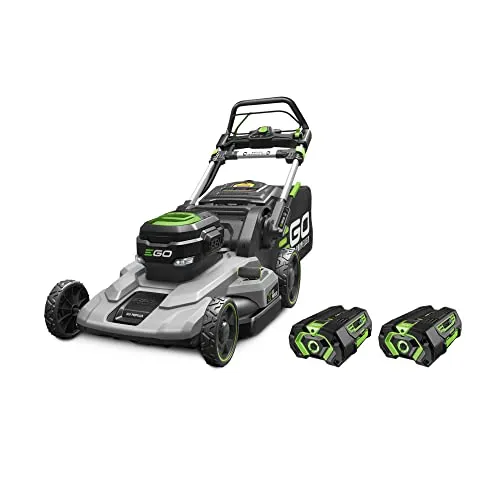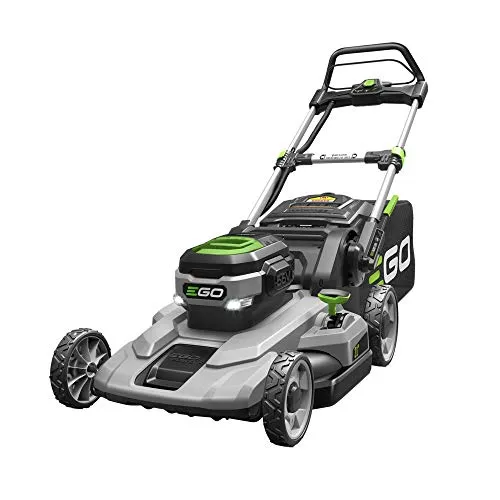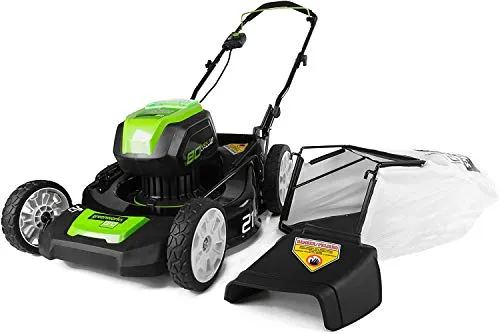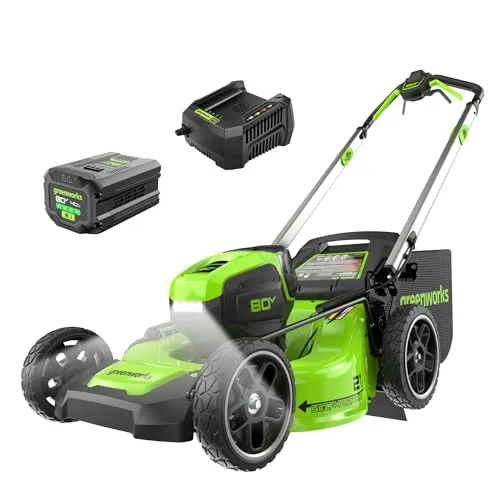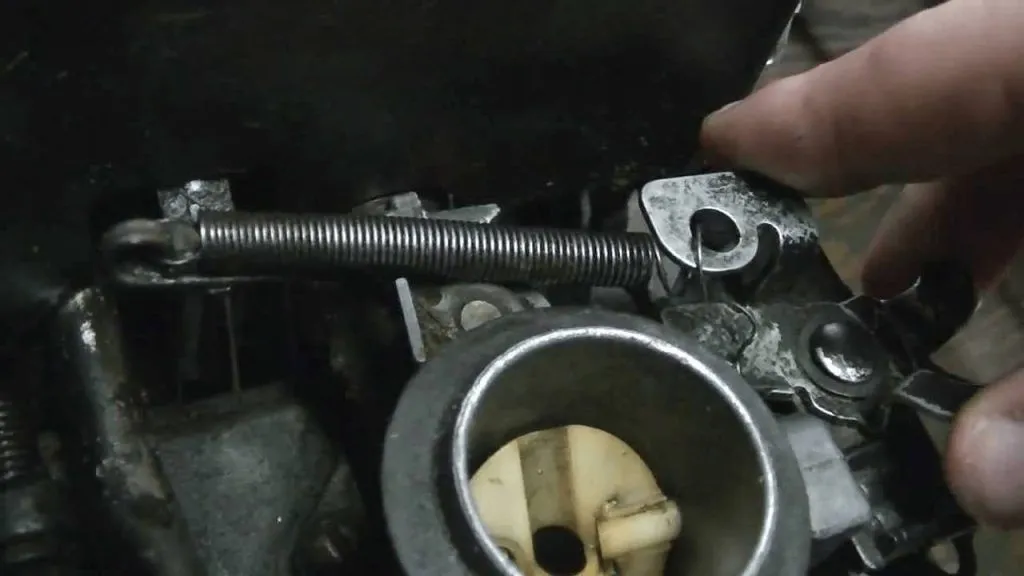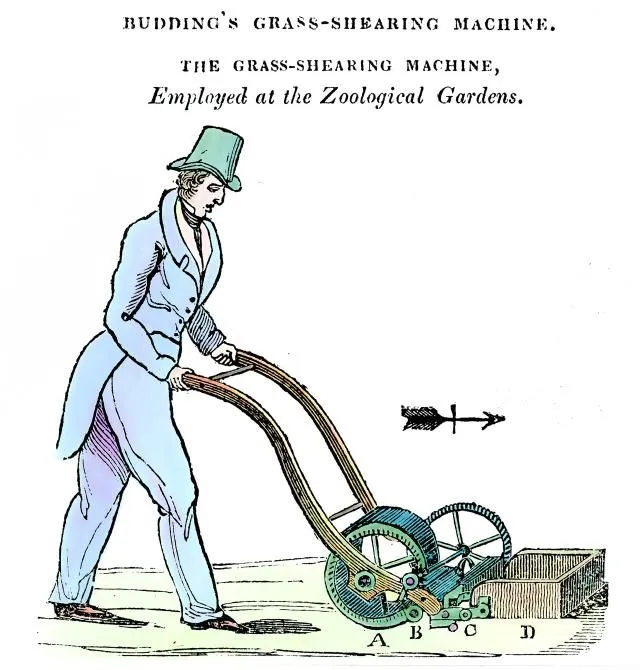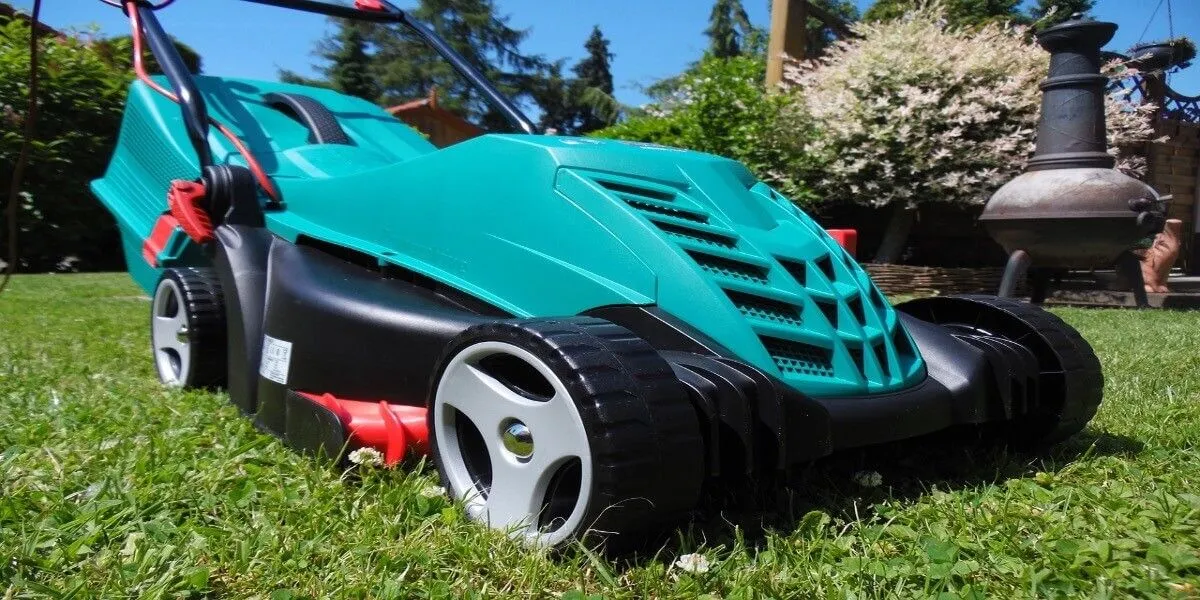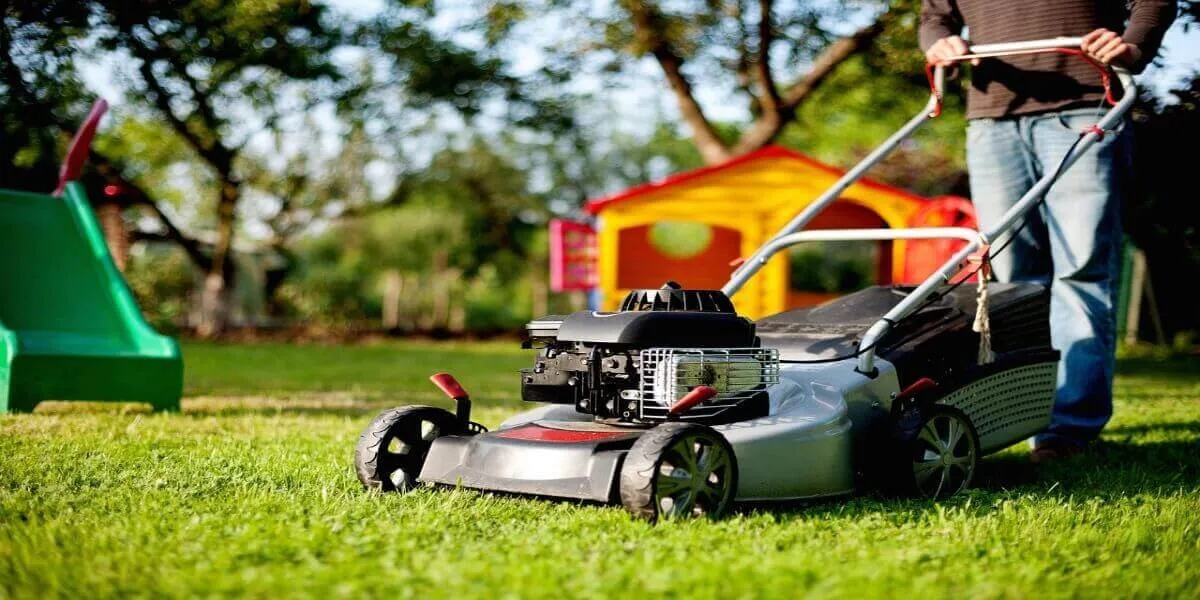Lawn Mower Carburetor Repair: Your Essential Troubleshoot Guide

Jeffrey Tung on Jan 1, 2024
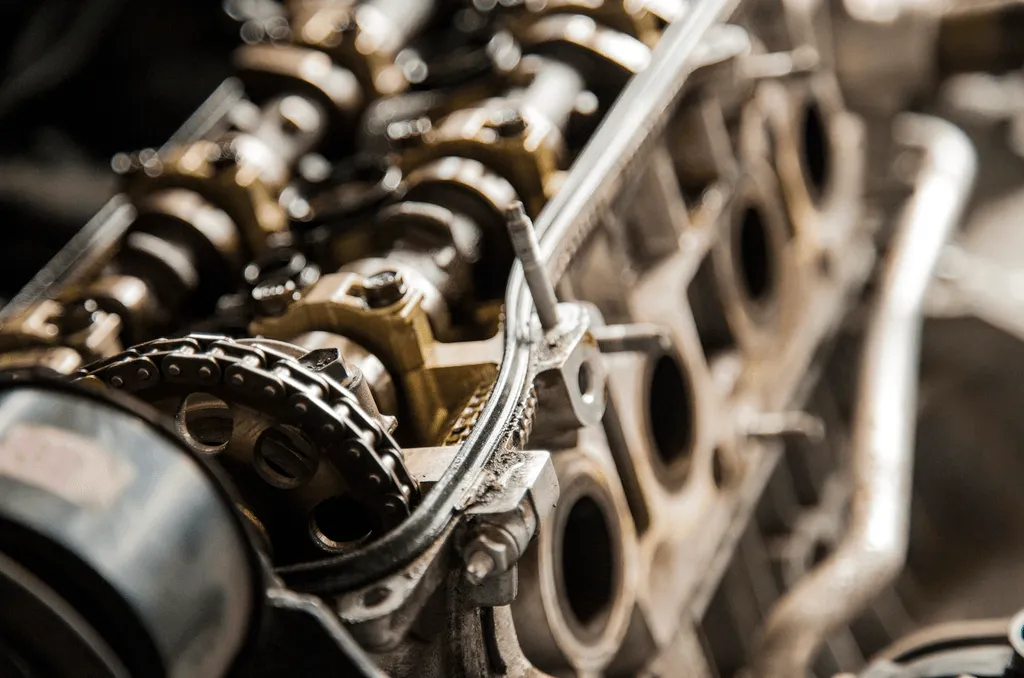
We earn affiliate commissions at no extra cost to you.
Carburetors play a crucial role in the overall functionality of a lawn mower. The majority of lawn mower issues that arise usually involve the carburetor and it’s for many reasons. Essentially, lawn mower carburetors are responsible for mixing the appropriate combination of gasoline and air in order for the engine to start up. Without it, or if you find that it is defective, you’ve got a huge problem in your hands – but it’s not something that you can’t fix! Read on to find out what you need to do for a lawn mower carburetor repair.
What does a carburetor look like on a lawn mower?
A carburetor is usually bolted to the top or side of a lawn mower engine – it depends on the manufacturer. As mentioned earlier, it is designed to mix air and gasoline through drawing the air from the air filter and the gas from the gas tank, and then mixing the two together in appropriate amounts. The fuel from the gas tank flows into the carburetor through a hole; the carburetor allows that gas to transfer in drops to the carburetor’s bowl. Afterward, the engine will create a suction on the carburetor in order to mix the gasoline and air at the appropriate ratio.
The float nut in a carburetor is the gold-colored part at the bottom of the bowl. It’s responsible for keeping the float bowl snug to the carburetor. Moreover, its small holes feed gasoline to the carburetor’s inner chamber. Take note that these holes can usually get clogged with old gas residue or other dirt; keep it clean for optimal performance. Oftentimes, cleaning these holes will start an engine that won’t start. The size of a float nut’s holes is important to take note of too. Because they’re the parts that feed the gasoline into the inner chamber, it is the one that determines which ratio of gas and air mixture will be used. Then, the mixture will be fed into the chamber of the piston and compressed. The spark plug will then ignite it and the explosion resulting from that will push the piston back, which will result in the lawn mower’s shaft to spin.
How to locate a carburetor on a lawn mower
Ultimately, you should be able to locate the lawn mower carburetor in order to perform some basic troubleshooting or maintenance.
Step 1: If necessary, turn off the mower’s ignition. Put the brakes on the parking and place your mower in gear in order to prevent rolling.
Step 2: Remove or release restraining devices, such as hood latches, so that the engine may be accessible.
Step 3: Identify the air filter and intake in order to locate the carburetor. You should see a square-shaped or round filter housing on the side or top of the engine; there are slits or holes at the top. Screws or latches will also be mounting the housing to the carburetor, which will also contain a foam filter or paper. This filter is responsible for preventing dust and dirt from entering the carburetor.
Step 4: You can also locate the carburetor by tracing the fuel line from the gas tank. To do that, you should also locate the gas tank; it’s usually black in color and is in a position that is easily accessible for fueling.
Step 5: Determine the fuel line that is attached to the tank. You will usually find that line near the bottom of the gas, while a small clamp also attaches it. Then simply follow the fuel line to the connection point from the tank with the carburetor.
How do I know if my lawn mower carburetor is bad?
There are many reasons and key signs that you should look out for to determine if your carburetor is defective or damaged. Below are the following points to take note of:
- The engine is weaker. When this happens, the performance of your lawn mower ultimately becomes weaker as well. You’ll know this if it’s not able to cut grass evenly or having difficulties in cutting grass that is denser.
- It’s emitting black smoke. This means that the carburetor is consuming more fuel than it should. Given that, you will inevitably spend more gasoline in order to balance that mixture. Moreover, inhaling black smoke is not good for your health; it can lead to dermatological and respiratory issues.
- It’s overheating. This means that the engine is exerting more effort to work than usual. This happens because it is using an inappropriate or poor ratio of fuel and air.
- It suddenly shuts down. Usually, lawn mowers shouldn’t have any problems when used for about an hour or more. When it shuts down around that time period of usage, it basically indicates that you really need to clean your carburetor or fix it entirely.
- It has a hard start. You shouldn’t be having much difficulty starting a lawn mower. Whether it’s started through pulling a cord or pushing a button, it should start pretty easily. When it has a jumpy start, it means that there is a problem with its internal parts.
How do you clean a carburetor on a lawn mower without removing it?
If you don’t have the time (or the skill) to remove the carburetor from your lawn mower, it’s actually possible for you to clean it without doing so. Follow the following steps to find out how to clean your carburetor:
Step 1: Assess the problem.
This may seem pretty obvious, but it’s a common occurrence for most operators to overlook this step. We think that our lawn mower has a particular problem and, most of the time, it turns out that it’s actually not that. Before you do anything to your lawn mower, make sure that you are completely sure what you’re trying to tackle. Otherwise, you might end up doing more harm to your lawn mower than you intended to.
To make sure that it’s really your carburetor that’s the problem, here’s what you want to do: apply your aerosol lubricant to the carburetor. You can use any cleaner as long as it’s specifically designed for carburetors if you have no aerosol lubricant available. After applying, try starting up your lawn mower. If it starts up properly, then whatever problem you have, cleaning the carburetor won’t help. If it doesn’t start the way you expect to, it’s a good indicator that your carburetor needs cleaning.
Step 2: Reveal the inside parts of the carburetor
Now that you’re sure what the problem is and that it’s definitely the carburetor, you can expose the carburetor’s inside parts. Turn off your engine and allow it to cool down first before proceeding. After cooling, expose the carburetor itself through opening the cover of the air filter; you can use a screwdriver to do this step. After removing the air filter’s cover, remove the exterior cover of the carburetor as well as the linkage in order to expose the inner parts of the carburetor.
Step 3: Use an aerosol cleaner or a carburetor spray cleaner
Once you’ve exposed the inner parts of your mower’s carburetor, you have to have a high-quality carburetor spray cleaner in order to really clean it thoroughly. You’re going to need it especially for cleaning it without removing the carburetor from the lawn mower.
Place the tip of your carburetor spray cleaner into the center of the carburetor. As you are doing this step, make sure that the mower’s engine and the carburetor are running. For effective cleaning, you should be holding your carburetor spray cleaner properly in order to really penetrate the throat of the carburetor.
Step 4: Remove the deposits
As you continue to spray inside your carburetor, there will inevitably be dirt deposits and oil that will be stuck at the lower throttle of the carburetor; carefully remove these. Afterward, make sure that the engine isn’t running first. Then, spray the cleaner onto the choke shaft. This is located at the base of the carburetor throat.
Step 5: Replace cover and linkage
You should consider replacing the cover and linkage of your lawn mower if you really want to make sure that these problems wouldn’t come up again in a short period of time. Once you’ve successfully replaced these parts, return the air filter to its proper place. Make sure to do this step because, otherwise, all your hard work will have gone to waste. Plus, you’ll be adding more problems to your lawn mower than you intended to. You can use a screwdriver to tighten the air filter into place.
Step 6: Inspect your lawn mower before ending
Inevitably, as you are cleaning your lawn mower carburetor, you might not have noticed that you have opened up some wires that are essential to your engine’s functionality. Make sure to not miss this very crucial step because you might end up with more complicated problems in the future. You can use a flashlight to inspect and check your lawn mower and its inside parts. If everything is in place as they should be, try starting your engine and hear if there’s a shaking or chugging sound. If so, then you’ve got a smooth start to your lawn mower.
How do you replace a carburetor?
There are some instances where you would have to completely replace the carburetor especially if cleaning is not going to cut it anymore. Follow the steps below to learn how to replace a carburetor:
Step 1: Disconnect the spark plug wire
Before proceeding with the succeeding steps, make sure first that you have disconnected the spark plug wire from the spark plug. You should also be working in a well-ventilated area for a more optimal and comfortable working environment.
Step 2: Remove the air filter housing
To do this step, you should pull the air filter cover off after releasing the catch. Remove the screws from the air filter base as well. After that, pull off the air filter base after releasing the breather tube.
Step 3: Drain the fuel tank
This is an important step because you wouldn’t want gas all over your floor as you disassemble your lawn mower. First, place a rag under in order to catch some spills. Use a fuel-safe container and put it under the gas line that is connected to the fuel tank. Then, release the spring clamp and disconnect the fuel line from the gas tank. After these steps, you can now drain the gasoline into the fuel-safe container that you have.
Step 4: Remove the blower housing
First, release the starter rope from the mower handle. Then, remove the screws from the blower housing and pull it off the engine.
Step 5: Remove the carburetor
Separate the carburetor mounting bracket arms in order to release the carburetor. Disconnect it from the carburetor adapter. Disconnect the choke linkage rods and governor as you hold the carburetor above the bracket. Release the fuel line spring clamp and pull the fuel line off the carburetor. Finally, remove the carburetor from the lawn mower.
Step 6: Install the new carburetor
Into the outlet port of the new carburetor, push the O-ring and install the retainer on top of it. Connect the fuel line to the new carburetor and secure it with the spring clamp. Connect back the choke linkage rods and governor as you are holding the carburetor over the mounting brackets. Push back the carburetor into the bracket arms and push the outlet port on the adapter fully. Push the air cleaner gasket into the channel on the carburetor inlet.
Step 7: Reinstall the blower housing
From this step, we are now reinstalling the parts that cover the carburetor. First, position the blower housing on top of the engine and line up the mounting holes. Screw the blower housing mounting to reinstall it. Then, you can reinstall the blower housing after reconnecting the starter rope to the mower handle.
Step 8: Reconnect the fuel line to the tank
Push the fuel line onto the tank fitting and secure it using the spring clamp.
Step 9: Reinstall the air filter housing
Position the air filter base on the front of the carburetor and reconnect the breather tube. Then, secure the air filter base with the mounting screws. You can now reinstall the air filter. Then, position the air filter cover on the front of the base and snap it into place, which will engage the locking tab.
Step 10: Reconnect the spark plug wire
Push the spark plug wire back onto the spark plug.
Is it better to rebuild a carburetor or buy a new one?
In a lawn mower carburetor repair, you have essentially two options: to repair or rebuild it. If you’re here reading this article, then you most probably have a lawn mower carburetor that is clogged with bad gas, dirt, corrosion, and varnish. If you’re really sure that it’s the carburetor that’s the problem of your lawn mower, then you can either replace or rebuild it. Your decision should be based on the following: budget, time, technical skills that you have, and the severity of the damage on your carburetor. As you read further, we’ll talk about the cost of fixing a carburetor and how much a unit actually costs.
How much does a carburetor cost for a lawn mower?
On most sites, such as Amazon and other outdoor appliance stores, you will find a lawn mower carburetor with varying prices. It can go from as high as $55 to as low as $15. If you’re looking for a carburetor repair kit to go with your carburetor should problems arise in the future, these products usually cost around $20 and above.
What to look for in a lawn mower carburetor
If you have come to a decision of replacing your lawn mower, you should look out for these qualities of a good lawn mower carburetor:
- You should pick a carburetor that has a good throttle response. The throttle response refers to how quickly the engine responds to acceleration requests. When you start your engine, you should be able to get a quick response with minimal lag time. Generally, having a good throttle response improves the performance of your lawn mower and its engine, as well as its maximizes the potential of your engine.
- Choose a carburetor that you can tune easily. What this means is that all adjustment features, such as air filters and screws, can be accessed easily just in case you want to adjust the air and fuel mixture to your preference.
- Lastly, you can’t, and should not, overlook the warranty when you’re making your purchase.
How much does it cost to fix a carburetor?
Rebuilding and replacing a carburetor varies in every aspect: price, time, and difficulty. You should take these factors into consideration before making your decision in how to go about your lawn mower carburetor repair.
In rebuilding the carburetor, the price range would go around $10-$60 if it is a DIY project. If you’re going to a shop to have it repaired, the cost would usually be $70/hour in addition to the $10-$60 in parts. In terms of time, it would take you about an hour and a half to two hours. You should be mechanically skilled in order to pull off rebuilding your mower’s carburetor. The process includes removing, disassembling, cleaning, replacement of components, rebuilding and reinstalling.
In replacing the carburetor, the cost would be around the range of $20-$200 if it is a DIY project. On the other hand, it would be around $70/hr in addition to the parts of about $20-200 if you go to a repair shop. This would take less time as compared to rebuilding; it would take you around 30-45 minutes of replacing. The difficulty of this task is around a moderate level so if you have enough knowledge and experience, you can perform this one. It would include removing the old carburetor and installing the new carburetor assembly.
Wrapping Up
To reiterate, lawn mower carburetors are extremely integral to your engine. For a smoother mowing, you should be able to tell whether or not your carburetor has gone bad and to determine how to handle it. With this ultimate guide of lawn mower carburetor repair, you may not be able to keep your mower free of problems (it’s impossible to do so), you will know how to deal with it should these issues arise.

